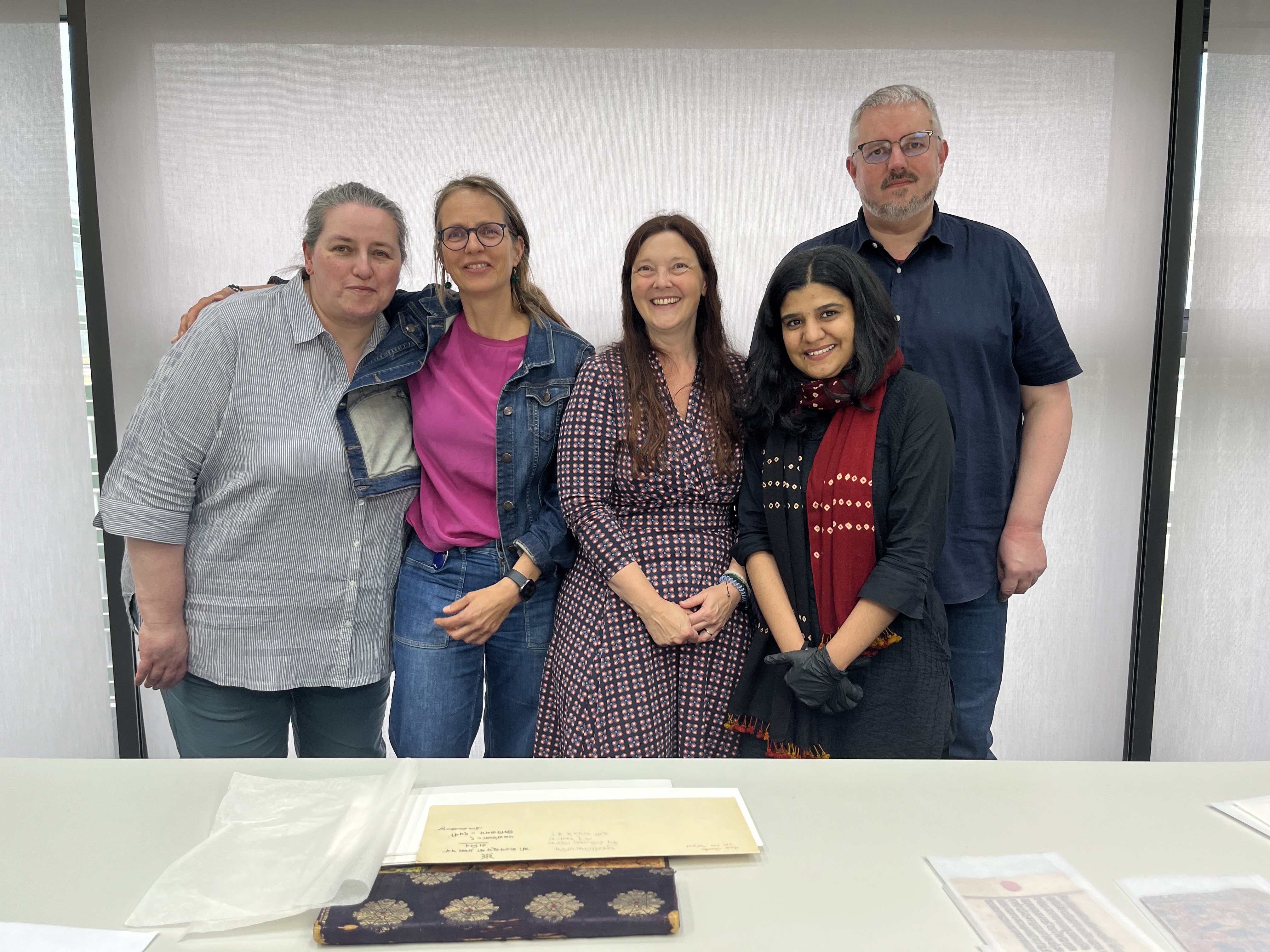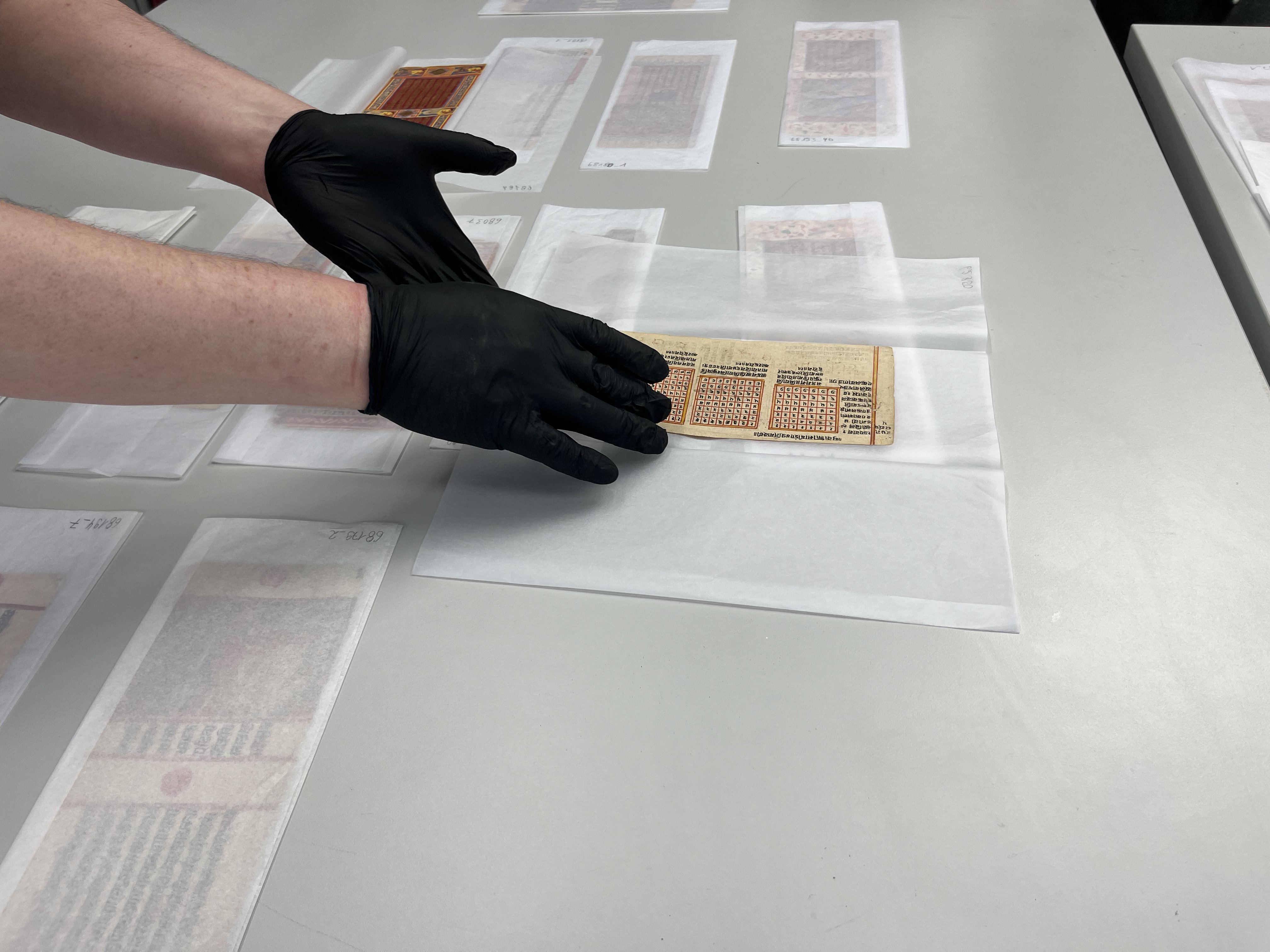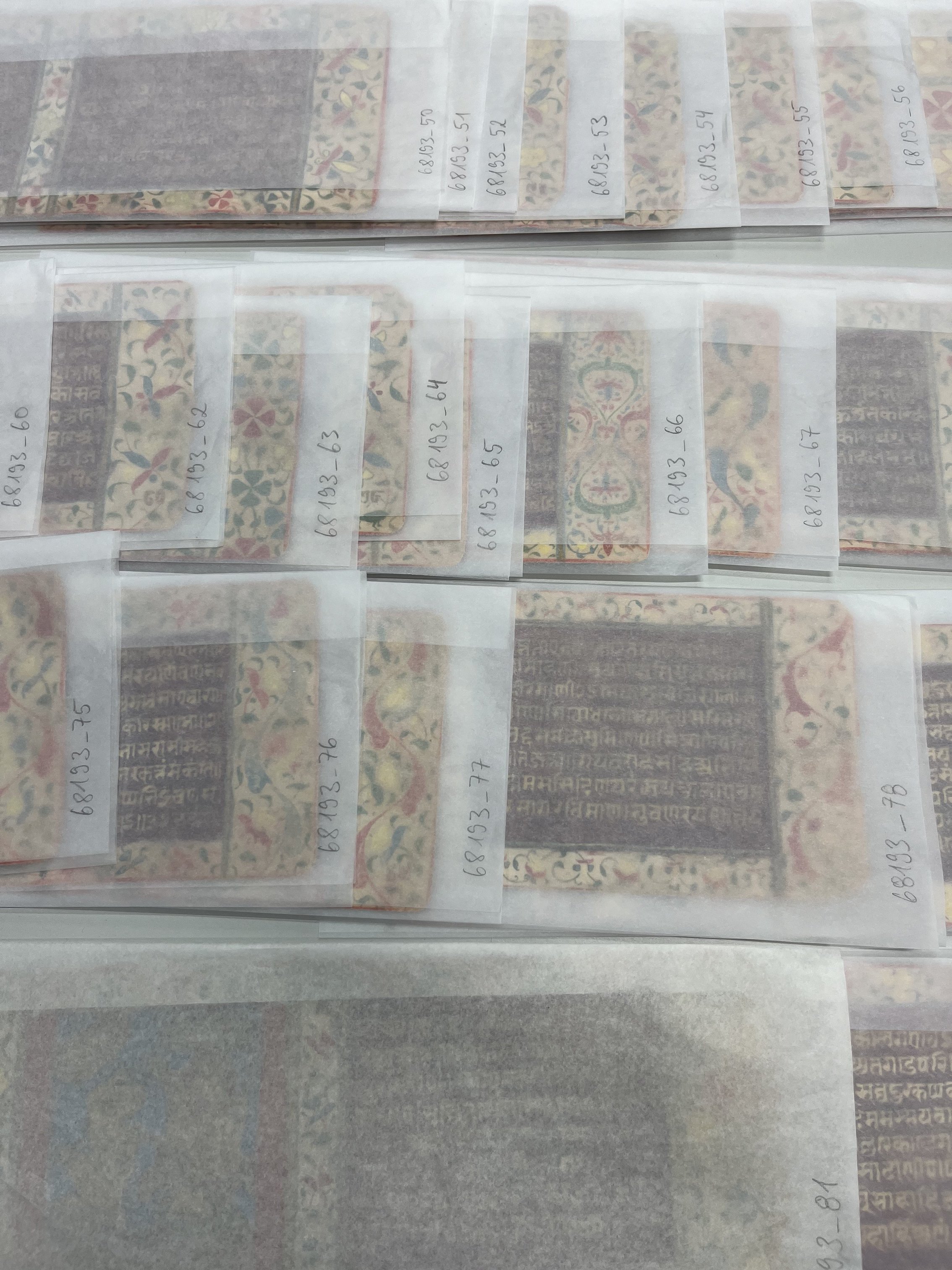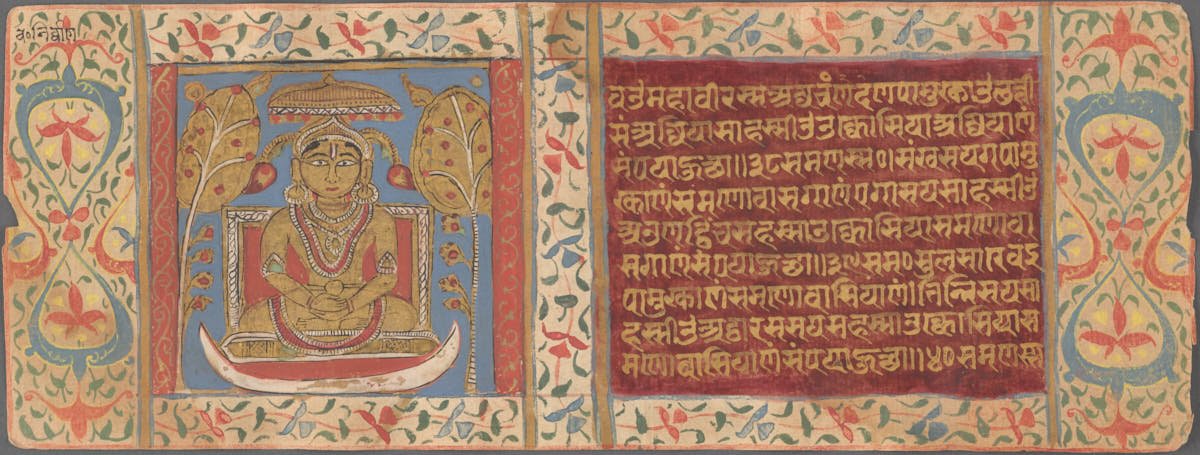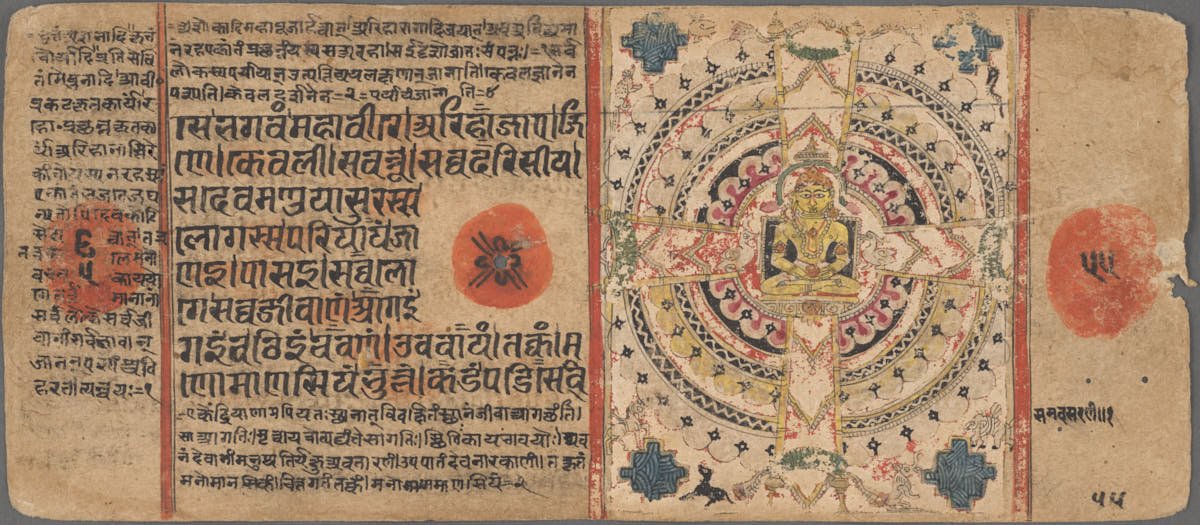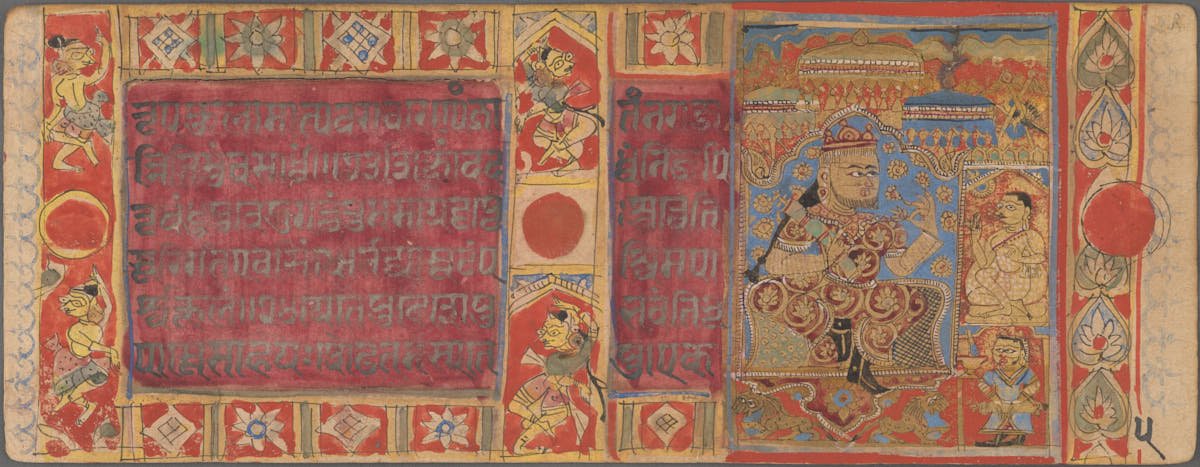
Patrick Krüger as expert at workshop on production processes and collection history
From June 5th to 7th, 2024, experts in South Asian manuscripts and miniature paintings Patrick Felix Krüger from CERES and Sonika Soni from the Museum Rietberg in Zurich (MRZ) discussed these and similar questions with reference to specific materials with the scientific advisor for the Asian collections at the Rautenstrauch-Joest-Museum Cologne (RJM) as part of the workshop “On the trail of artists and collectors. Extended research into Jain miniature painting (India) from the collection of the Rautenstrauch-Joest Museum” in Cologne.
Between 2018 and 2020, private collectors donated extraordinary collections of 164 folios of Jain miniature painting to the RJM, including an almost complete manuscript of the Kalpasutra. The period of production of the manuscripts from western India (Gujarat and Rajasthan) ranges from the 14th to the 19th century. Collections of Jain manuscripts are rare in German museums. At the same time, they are significant in terms of art and religious history, as they are among the oldest surviving examples of Indian manuscript art.
Selected folios from the collection were already on display in 2019/2020 in the Blickpunkt exhibition „Saints and Ascetics - Jaina Miniature Painting from India“, which the RJM presented in close cooperation with CERES. In the course of a public workshop discussion on June 5, the topic of “forgery” was also bespoken. Questions about the benefits and dangers of copies and unrecognized “forgeries” in museum collections were discussed, as well as the need to overcome the fixation on subjective “connoisseurship” and the identification of “masterpieces” in favour of an appreciation of the cultural and religious-historical significance of objects.
For a long time, the academic discussion on various forms of copies was limited to European works of art. Increasingly, however, objects from non-European cultures are also coming into focus. In recent decades, shifts on the international art markets have also led to an increase in so-called “academic forgeries”, which are produced or instructed by people trained in art history or archaeology and which can often only be unmasked as imitations by experts with a great deal of time and technical effort. For a well-founded scientific analysis, it is fundamentally important to record which objects were and are reproduced at specific times for private clients or for the art market and which are not. From this, conclusions can be drawn regarding the level of knowledge and expectations of (potential) buyers, thus revealing established images and projections of the culture from which these objects originate.
The ongoing research into the manuscripts is a joint project between the RJM and CERES. The holdings are subjected to an art and religious-historical examination, as well as a scientific analysis. This is being done in close cooperation with the Cologne Institute of Conservation Sciences, where part of the workshop took place. Systematic analyses of the pigments and painting grounds used complement stylistic and iconographic studies and can open up new perspectives for the chronological and regional classification of existing manuscript sheets. The workshop served not least to intensify the existing cooperation between CERES and the museums in Cologne and Zurich.
Jainism Research Center - CERES - Ruhr-Universität Bochum (rub.de)


